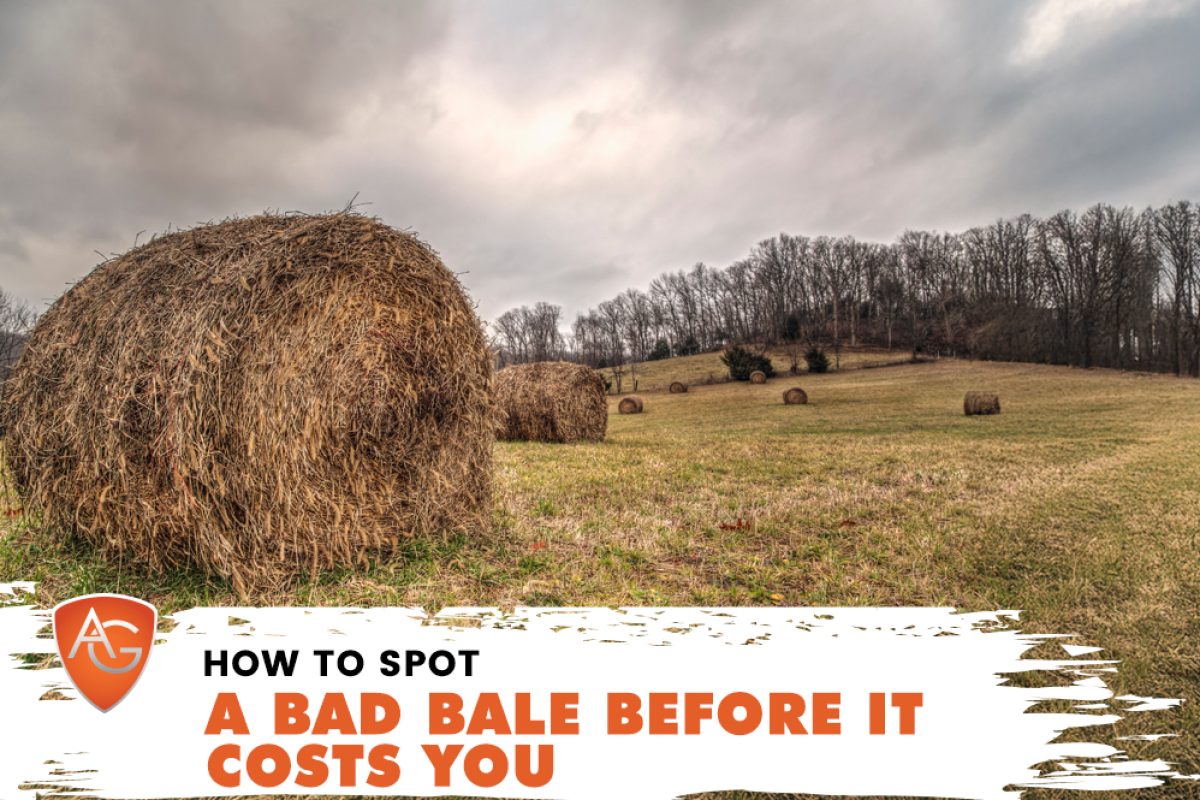Overview: Learn how to spot a bad bale before it impacts your herd. Discover the telltale signs of poor-quality hay, from mold to moisture issues, and protect your livestock investment. Read on!
In ranch country — from the rolling pastures of Laramie County, Wyoming to the ag communities of Northern Colorado — quality hay is the backbone of a healthy herd. But even a single bad bale can throw off your feed plan, jeopardize animal health, or worse, lead to lost income.
Whether you’re feeding premium North Park Timothy Grass to horses or keeping your cows in shape with Cow Alfalfa, knowing how to spot a bad bale before you fork it out can save you money, time, and a whole lot of frustration.
Here’s what to watch for.
1. Color Isn’t Everything — But It’s the First Clue
When you bust open a bale, color can tell you a lot. Good hay — especially timothy or alfalfa — should have a natural green tint. That color tells you the hay was cured and stored properly, and it still holds onto its nutrient value.
But color alone isn’t enough.
Brown or black spots inside the bale? That likely means moisture got in and created mold.
Sun-bleached yellow hay might still be edible, but it’s lost a fair amount of vitamins A and E — especially critical for young or lactating animals.
Tip for Wyoming ranchers: High-altitude sun in areas like Cheyenne and Burns can bleach hay quicker if bales are left uncovered — so be sure to check not just the surface but the inside.
>> Related Reading: Color of Horse Hay: What Does It Mean?
2. Trust Your Nose — Mold Has a Signature Scent
Smell is one of the fastest ways to detect a bad bale. Quality hay should smell sweet, fresh, and grassy. If you crack open a bale and get a musty, sour, or sharp ammonia-like odor — walk away.
That smell typically means one of two things:
-
The hay was baled too wet.
-
The bale has started to ferment or mold.
Feeding moldy hay can cause respiratory issues, digestive upset, or even foal abortion in pregnant mares. You don’t want to take that gamble.
3. Moisture Content: The Silent Killer of Good Hay
Moisture doesn’t just reduce quality — it creates danger. Hay that’s baled with over 20% moisture is at risk for spontaneous combustion. In fact, barn fires due to overheated hay bales aren’t unheard of in this region.
Here’s how to check:
-
Use a hay moisture tester if you’ve got one.
-
Without tools? Feel for warmth, dampness, or “heaviness” in the bale. Good hay should be dry and crisp, not spongy or slick.
Local Note: In parts of Northern Colorado like Wellington and Fort Collins, afternoon thunderstorms can catch farmers off guard during baling. Always verify moisture if you’re sourcing hay post-storm.
4. Watch for Weeds, Thistles, & Trash
A clean bale should be just that: clean. Weeds lower the nutritional value and can introduce harmful plants like hoary alyssum or leafy spurge, both of which can be toxic.
What to look for:
-
Sharp or prickly materials
-
Unidentified grasses or invasive species
-
Bits of plastic twine, wire, or debris — often signs of poor harvesting practices
If you’re buying bales that include Orchard/Brome/Timothy with Light Alfalfa, make sure the mix looks intentional — not like a load of mystery greens stuffed together.
5. Bale Structure Matters More Than You Think
If a bale is falling apart, it’s often a clue that:
-
It wasn’t baled tight enough
-
The hay was too dry when packed
-
It wasn’t stored properly and has started to break down
Loose bales lose more nutrients, attract more moisture, and create a breeding ground for rodents or mold. Conversely, if a bale is too tightly packed, especially in round form, there’s a risk that moisture got trapped inside.
In Laramie County, where Intermediate Wheat Rounds and Corn Stalk Rounds are commonly stored outdoors, you’ll want to check for weather damage or internal clumping due to water infiltration.
6. Flake Test: The Inside Tells the Truth
Even if a bale looks fine on the outside, always check the interior. Break open several flakes and examine for:
-
Clumping or slimy textures
-
Dust clouds when disturbed
-
Unusual heat or discoloration
Quality hay should flake easily, with no compressed layers or compressed moisture pockets. For Straight Alfalfa or Cow Hay, this test is especially important due to their higher protein and moisture sensitivity.
Final Thoughts
Feeding poor-quality hay isn’t just a waste — it’s a risk. In Wyoming and Northern Colorado, livestock health is your livelihood. That’s why it pays to buy from a trusted, local supplier who inspects every load and knows where their hay comes from.
At All Around Ag, we take hay seriously — because we know what’s at stake. Our inventory includes everything from premium horse-grade North Park Timothy to affordable Cow Hay, all stored properly and inspected with care.
-
We serve hardworking ranchers in Cheyenne, Albin, Wellington, Fort Collins, and across Laramie County and Northern Colorado.
-
We source and supply only hay we’d feed our own herds.
-
We’re here to help you make the right call — every bale, every time.
Need help selecting the right hay for your livestock?
Call us or stop by. Let’s talk quality, nutrition, and long-term care — rancher to rancher.
